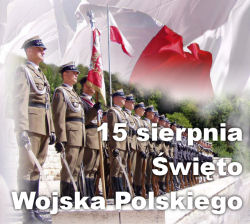The Assumption of Mary holiday in Poland Posted by Kasia on Aug 11, 2017 in Culture, Religion
The Assumption of Mary, or the Day of Assumption (Wniebowstąpienie Maryi), is an annual public holiday in Poland on August 15. It is also Polish Army Day (Święto Wojska Polskiego) as it is connected with the anniversary of the Battle of Warsaw in 1920. This battle was considered a breakthrough battle – it decided not only Poland’s independence but it also blocked the spread of communism and Soviet totalitarianism in Europe during the 1920s. .
The Assumption of Mary has been celebrated since the fourth century CE as it was an important date in Christian history. However it wasn’t until Pope Pius XII ruled that it would be an official holiday in 1950.
The Day of Assumption is an official public holiday in Poland, so schools, banks, government offices and most private businesses are closed. There is a trade prohibition on public holidays in Poland. People intending to travel via public transport during public holidays must check with the public transit authorities on any changes to time schedules.
The Assumption of the Virgin Mary, in Poland also known as the Day of the ‘Herbal’ Mother of God, is celebrated in the Catholic Church all over the world. In Poland, it is usually connected with the custom of blessing and offering gifts of herbs, cereals, vegetables and flowers.
The Sanctuary of Jasna Góra in Częstochowa is a major destination point for pilgrims throughout and beyond Poland. Many pilgrims pray and sing while walking hundreds of kilometers for days.
Many people in Poland attend church masses on the Day of Assumption. A number of churches have services to remember Polish soldiers who died fighting for their country. Gatherings take place at some cemeteries where readings are made in honor of dead soldiers. Another ceremonious event on August 15 is the Change of Guards near the Tomb of the Unknown Soldier in Warsaw.

Build vocabulary, practice pronunciation, and more with Transparent Language Online. Available anytime, anywhere, on any device.






Comments:
Edward Pindral:
What does “fourth century CE” mean.
Ed B:
I always enjoy your emails